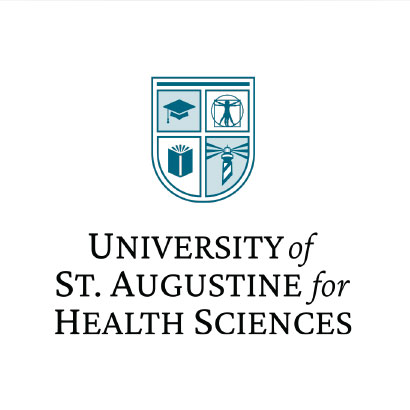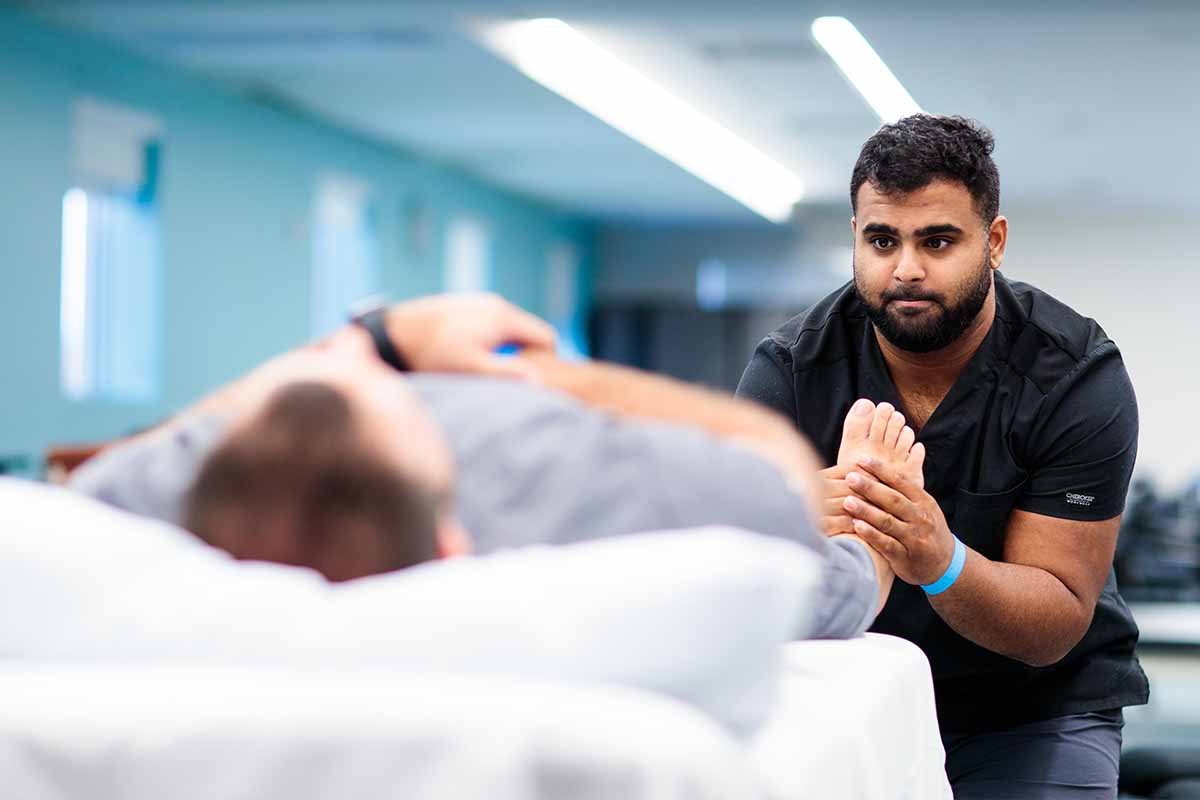October is National Physical Therapy Month, a designation promoted by the American Physical Therapy Association (APTA) to create awareness about the importance of physical therapy in today’s healthcare environment. Did you know that the founding campus of the nation’s largest, graduate-level physical therapy university is located right here in St. Augustine? At University of St. Augustine for Health Sciences (USAHS) we are celebrating 40 years of educating clinical professionals and improving healthcare by preparing graduates to be leaders in their fields – especially in physical therapy (PT).
What Can Physical Therapists Do?
Physical therapists (PTs) are highly educated, licensed healthcare professionals. The primary role of a PT is to examine and evaluate a person’s “movement system.” This is a highly complex system involving the cardiovascular, pulmonary, endocrine and nervous systems, as well as the skin, muscles and bones. PTs diagnose issues in the human movement system and provide customized treatment through an integrated plan of care for the best possible prognosis.
Physical therapists can teach patients how to prevent or manage their condition to achieve long-term health benefits. PTs examine each individual and develop a plan, using treatment techniques to promote the ability to move, reduce pain, restore function, and prevent disability. In addition, PTs work with individuals to prevent the loss of mobility before it occurs through fitness- and wellness-oriented programs for healthier and more active lifestyles.
Physical therapists provide care for people in a variety of settings, including hospitals, private practices, outpatient clinics, home health agencies, schools, sports and fitness facilities, work settings, and nursing homes. Here in Florida, state licensure is required to practice as a physical therapist.
Physical therapists can:
- Help people avoid surgery and eliminate pain without the use of medication.
- Restore mobility and prevent loss of mobility before it occurs.
- Prevent injury to the ligaments, tendons and muscles.
- Help infants and children develop healthy motor skills and improve play, eating and sleeping.
- Help seniors maintain health, wellness and independence by reducing fall risks and improving bone health, flexibility, muscle strength and cardiovascular health.
This year’s theme for PT Month is an important one, highlighting PT’s role in pain management in today’s environment of rampant opioid abuse. Pain is often the reason why people enter the healthcare system. Over the last 20 years, healthcare providers have increasingly tried to help patients manage pain by opioid prescriptions—highly addictive medications whose misuse has caused an epidemic that kills 115 Americans every day, according to the Centers for Disease Control and Prevention (CDC).
Every year millions of Americans use opioids to manage pain. Doctor-prescribed opioids are appropriate in some cases, but they just mask the pain—and reliance on opioids has led to the worst drug crisis in American history. The CDC recommends safe alternatives like physical therapy for the management of most non–cancer-related pain. PTs and physical therapist assistants (PTAs) have a responsibility to understand the full scope of the epidemic and its potential impact on their patients and clients.
In Florida alone, prescription drugs are responsible for more than 60 percent of all narcotics found in drug-related deaths. Opioid-use disorders increased more than 750 percent over the past 26 years in Florida, according to a 2018 study published in the Journal of the American Medical Association.
The CDC’s recommendations point to “high-quality evidence” that treatments provided by PTs are especially effective at reducing pain and improving function in cases of low back pain, fibromyalgia, and hip and knee osteoarthritis. Additionally, several studies show the efficacy of physical therapist interventions in preventing, minimizing and, in some cases, eliminating pain in a patient’s post-surgery, in patients with cancer, and in other clinical scenarios. Modern society often puts a premium on quick-fix solutions to complex problems.
When it comes to pain and prescribing opioids, this desire for a quick fix can be counterproductive and dangerous. When individuals experience pain, non opioid options are often safer, more effective, and longer lasting. Incorporating such options as standards of practice should be a central tenet in addressing the opioid crisis.
To be clear: opioids have a role in addressing pain. While we examine the use of opioids as an inappropriate first strategy for too many patients, we also must ensure that we do not limit access to opioids for patients who need them.
Physical therapists are on the front lines of Florida’s battle against pain. They are essential members of the healthcare team to successfully manage chronic pain and even assist with addiction recovery.
The CDC recommends physical therapy as a natural alternative to opioid pain killers (such as Oxycontin and fentanyl) and other prescription drugs. Why? Because prescription pain relievers only mask pain, while physical therapy treats the underlying causes of pain. Physical therapy gives you power over pain. It restores movement and mobility to minimize and even stop the pain.
Physical Therapists commonly work with patients to alleviate pain involving the neck, shoulders, lower back, and knees. For example:
- Early physical therapy treatment within two weeks for neck, knee or back pain reduces the need for opioids by up to 60 percent.
- 80 percent of patients with knee, back, and shoulder disorders remain opioid-free for a year following physical therapy.
- An increase in physical activity can also reduce your risk of other chronic diseases.
No one wants to live in pain. But no one should put their health at risk to be pain free. PT for Pain is a project of the Florida Physical Therapy Association (FPTA) dedicated to improving the health, wellness and quality of life of people in Florida through the practice and advancement of physical therapy.
Pain is personal, but treating pain takes teamwork. When it comes to your health, you have a choice. Choose more movement and better health. We encourage you to consider physical therapy.
SOURCES: American Physical Therapy Association and Florida Physical Therapy Association








